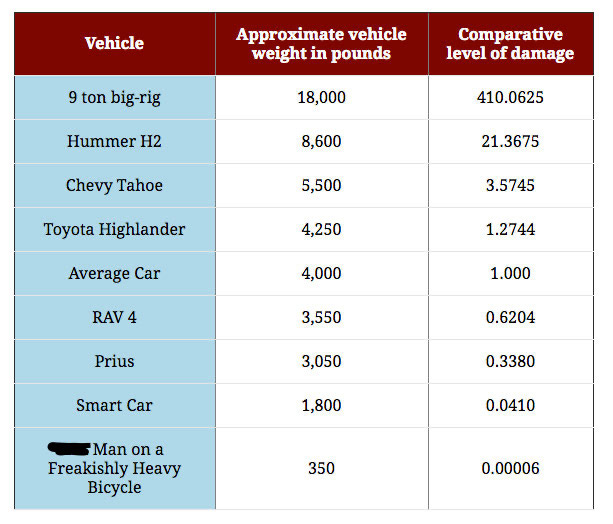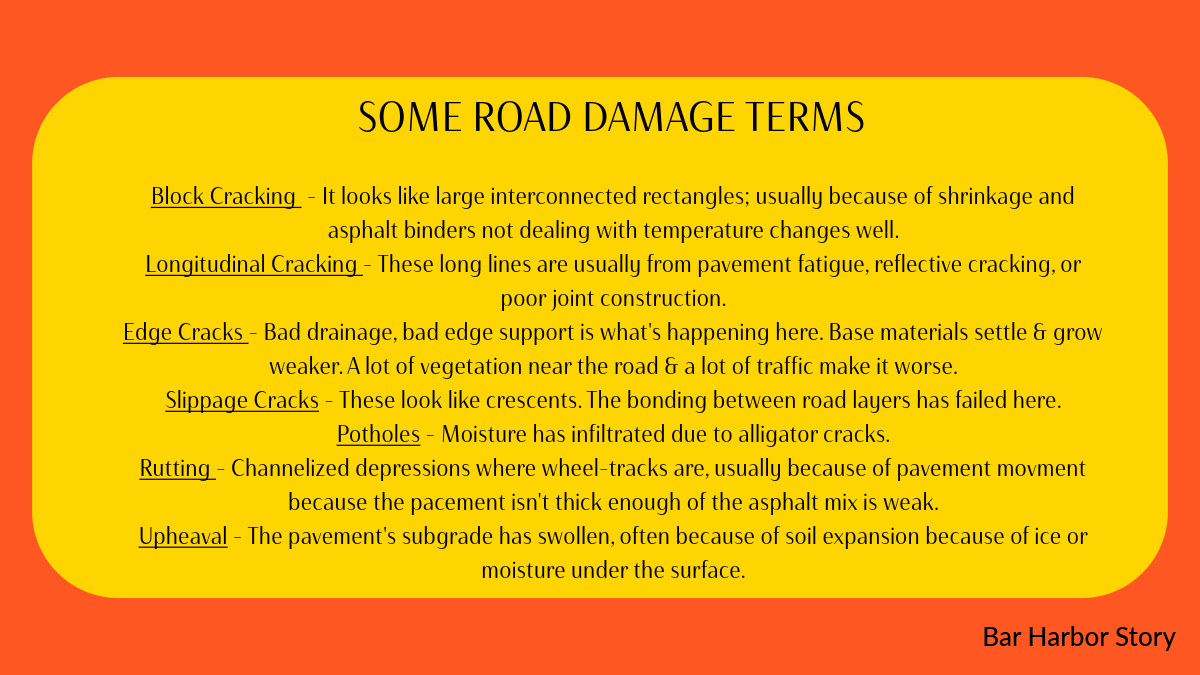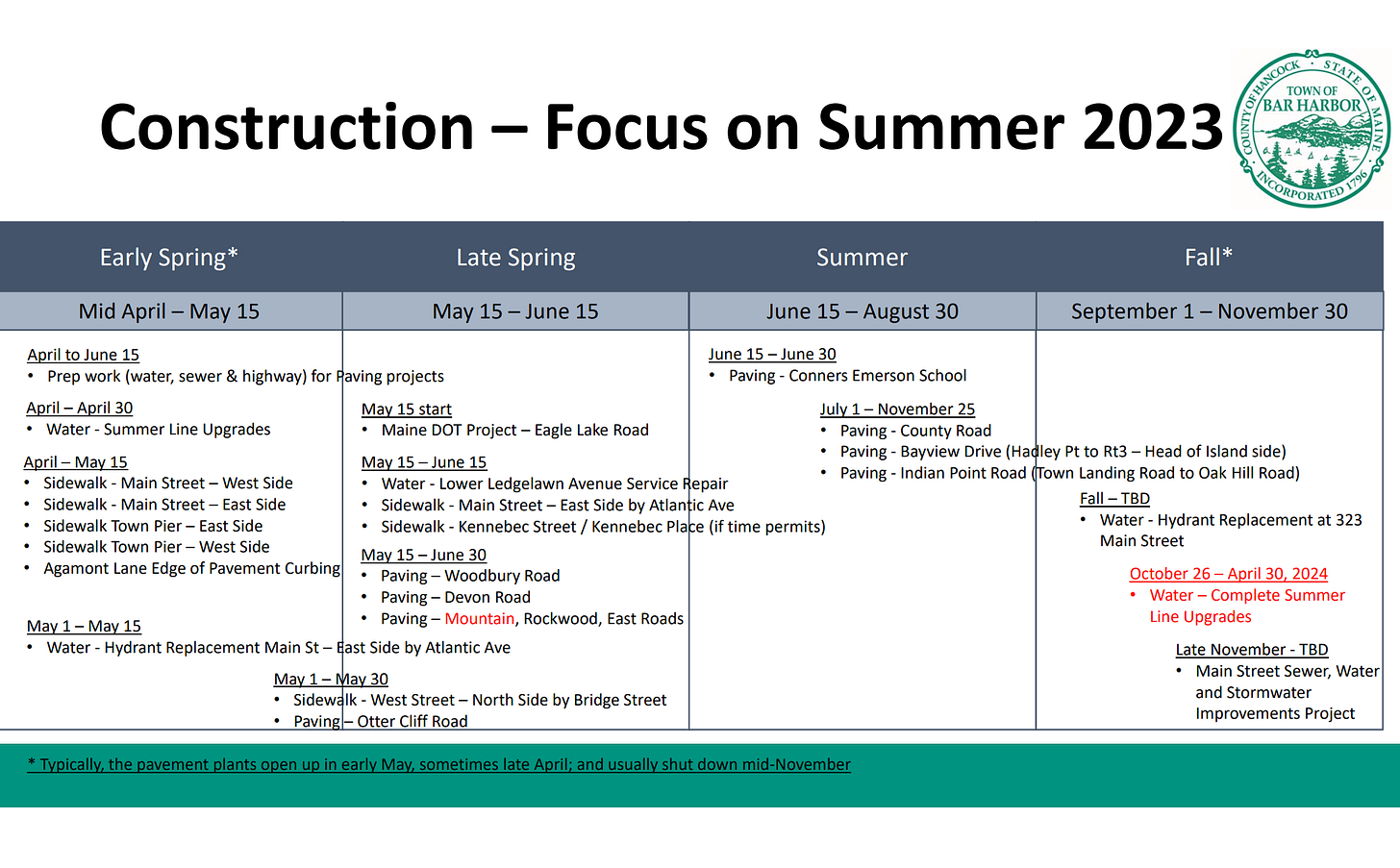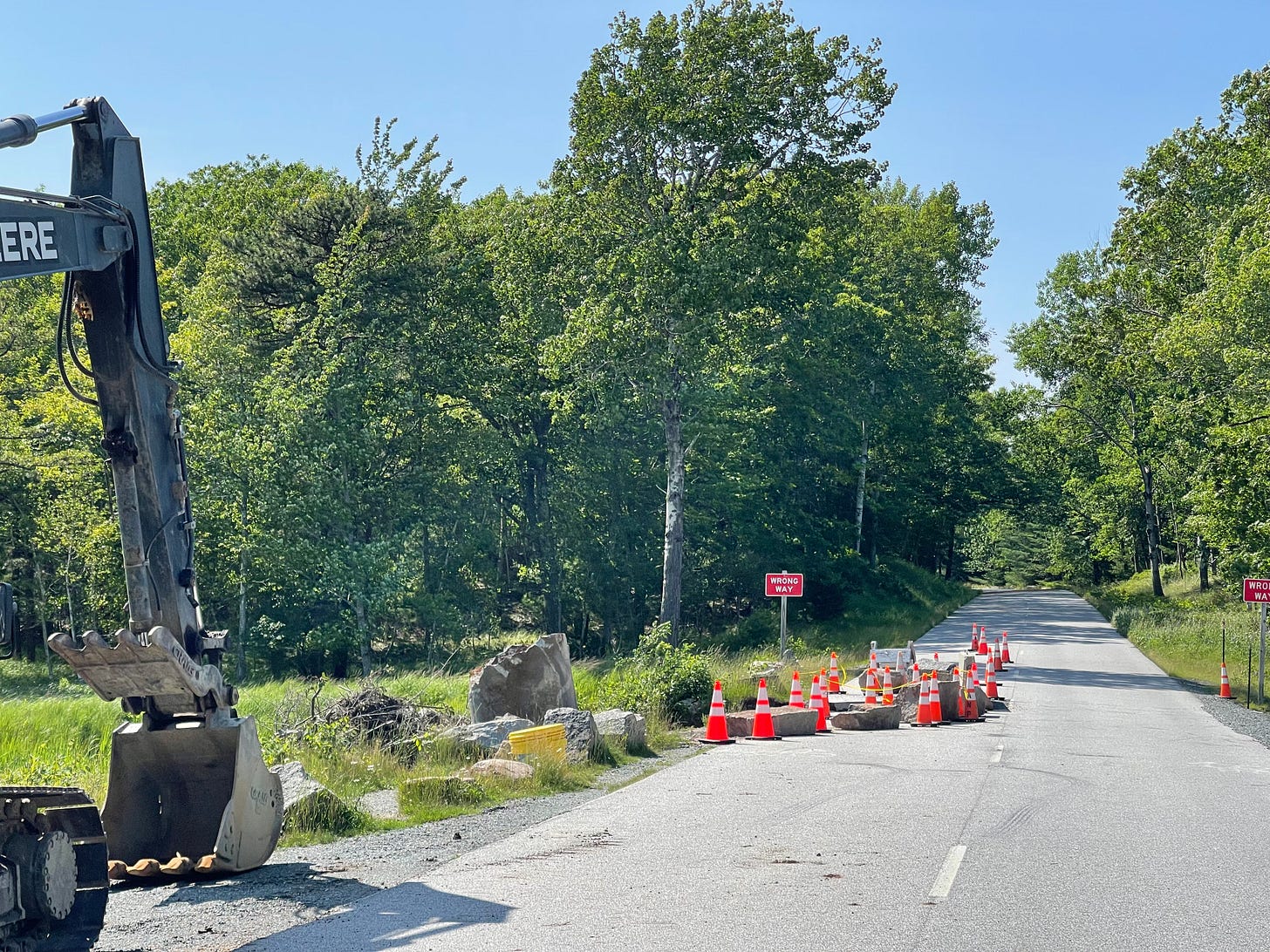Approximately 23% of Bar Harbor Roads Are in an Unacceptable Condition
However, only 2% of roads currently need to be reconstructed
BAR HARBOR—Potholes. Long cracks in the asphalt. Subsurface issues. Heaves. Bar Harbor roads sometimes look like they’ve been hard used.
Poor road conditions typically require reconstruction. Detours are created. Drivers seek alternate routes—sometimes through neighborhoods—Traffic congestion can increase.
The Bar Harbor Town Councilor received its own state of the Bar Harbor roads report Tuesday night from Public Works Director Bethany Leavitt.
“Thirty-three percent of the roads are in acceptable condition and forty five percent are in fair condition. That’s a really good story, actually,” Leavitt said. “Only 23% do we rate as unacceptable condition.”
Those Bar Harbor roads in poor condition are not alone. According to TRIP, a transportation research non-profit, “A total of 44% of Maine’s major roads are in poor or mediocre condition. Driving on deteriorated roads costs Maine motorists $581 million a year–$555 per driver–in the form of additional repairs, accelerated vehicle depreciation, and increased fuel consumption and tire wear.”
There are two main reasons roads deteriorate: weather and wear and tear from vehicles. That wear and tear from tourist traffic was brought up by Council Vice Chair Gary Friedmann. The heavier the vehicle, the more damage is done.
SUSTAINABILITY AND STORMS AND COSTS
In a 2023 article in Forbes by Laura Wrinkless, she writes, “Roads in coastal areas are particularly vulnerable to flooding from storm surges and sea level rise. According to the U.S. Global Change Research Program, more than 60,000 miles of coastal roads are already at risk, and in the Gulf Coast, ‘2,400 miles of major roadway could be permanently flooded by sea level rise in the next 50 to 100 years.’ The salinity of seawater means that coastal floods don’t just cause structural damage; they can lead to chemical degradation of roading materials, too.”
Back in 1960, the US spent $27 million for a massive AASHO test, which looked at road conditions across multiple types of surfaces on a stretch of interstate. How long a road lasts relates to how thick the pavement is, how many vehicles travel it, and how heavy those vehicles are. It seems a bit obvious: an eighteen-wheeler hauling a building is going to do more damage than a bicyclist.
According to Winkless, “Road transport is one of the key contributors to humanity’s emissions footprint, and as such, is an important driver of climate change. It is also one of the sectors most susceptible to the effects of climate change. Let’s hope a sense of self-preservation kicks in, sooner rather than later.”
Those sustainability issues were not discussed at the council meeting. The focus was on costs to maintain the roads.
Two percent of Bar Harbor’s roads need to be reconstructed. Leavitt said that her department is trying to create a unified work plan to use the money wisely as it approaches the problems, factoring in the storm water drainage system and waste water and water system as the staff members repair roads.
The pavement condition score ranges from 0 to 100. “The range is really driven by at what point you have to move into a different kind of treatment,” she said. Some roads might need rehabilitation. Some roads might need to be completely reconstructed.
She also explained the cost for different types of road repairs and color-coded road conditions in a multi-page handout for councilors.
Leavitt gave different scenarios for the amount of money the town could spend in the next ten years each year. $850,000 maintains the same mix of road quality as the town has currently.
If nothing is done over the next ten years, more roads become unacceptable and a lot less become “fair.” The cost levels in the report are static and not cost-inflated.
Councilor Matthew Hochman asked if this repair was generally looked at in a 10-year cycle as presented. He said he was asking because of the potential very large increase in taxes this year and was wondering if they could spread it out a bit more. It is, she said.
Friedmann also asked about the budget’s carry-forward of $900,000. Spring contract work hasn’t been implemented there, which creates a false sense of money carried forward, Leavitt said. “That’s $400,000 of contracted work to do this spring.”
She also detailed a couple of high-cost projects coming up.
The Sand Point Road retaining wall project will be going out to bid and is estimated to cost $750,000.
“It’s a wall that’s basically falling down on a property in town,” Leavitt said. There’s also an issue with culverts at Crooked Road and Norway Drive, which will cost $634,000. Glen Mary Road is also an upcoming project.
“The roads that do need attentions—they need attention,” Leavitt stressed. She added that the workers at the town’s highway department did a great job and worked hard on last year’s road projects.
“Fifty-two miles of road, 2% of that is more or less a mile,” Councilor Kyle Shank said. “So, if it’s a two-lane, it’s basically a million dollars.” That, he said, is why there needs to be a carry rate in the budget.
“The cost differential once you lose control of a road is just phenomenal,” Town Manager James Smith said.
Smith was speaking of the cost to bring a road that hasn’t been taking care of back up to a good condition. There are also other costs to poor roads that aren’t as immediately evident.
According to TRIP, “Traffic crashes in Maine imposed a total of $2.5 billion in economic costs in 2022. TRIP estimates that a lack of adequate roadway safety features, while not the primary factor, was likely a contributing factor in approximately one-third of all fatal traffic crashes, resulting in $842 million in economic costs in the state in 2022. These costs include work and household productivity losses, property damage, medical costs, rehabilitation costs, legal and court costs, congestion costs, and emergency services.”

LINKS TO LEARN MORE
https://www.nlc.org/article/2022/08/03/innovative-ways-to-deal-with-traffic-congestion-road-funding/
https://www.barharbormaine.gov/AgendaCenter/ViewFile/Agenda/_02202024-3369

















The term "unacceptable condition" relies heavily upon the eye of the beholder. I'll bet there are cyclists who would come up with a somewhat less charitable assessment. That said I totally agree that heavy vehicles cause the most damage which is why some roads are closed to heavy vehicles in the spring. Most rural roads in Maine are very vulnerable to damage from heavy vehicles as they are often built upon ledge with less than optimal sub base material. This leads to poor drainage, frost heaves, and eventually breaks in the surface. Left untreated cracks and breaks lead to water intrusion and the cycle repeats until the entire pavement needs to be replaced. The question is not whether or not repairs are required the question is who is going to foot the bill. And the first source that comes to mind is the Cruise Ship Fund. The average Greyhound style tour bus weighs 48,000 lbs when passengers and luggage are factored in and they must of needs use Bar Harbor roads to gain access to the park. Moreover a few years back during one if the government shutdowns tour buses unable to enter the park ran trips all over the island on roads never designed to carry that sort of weight. Clearly it is reasonable to expect that these buses shoulder at least some of the cost of road repair.
That picture looks like Seal Harbor beach, not the damage at the seawall in Little Long Pond.